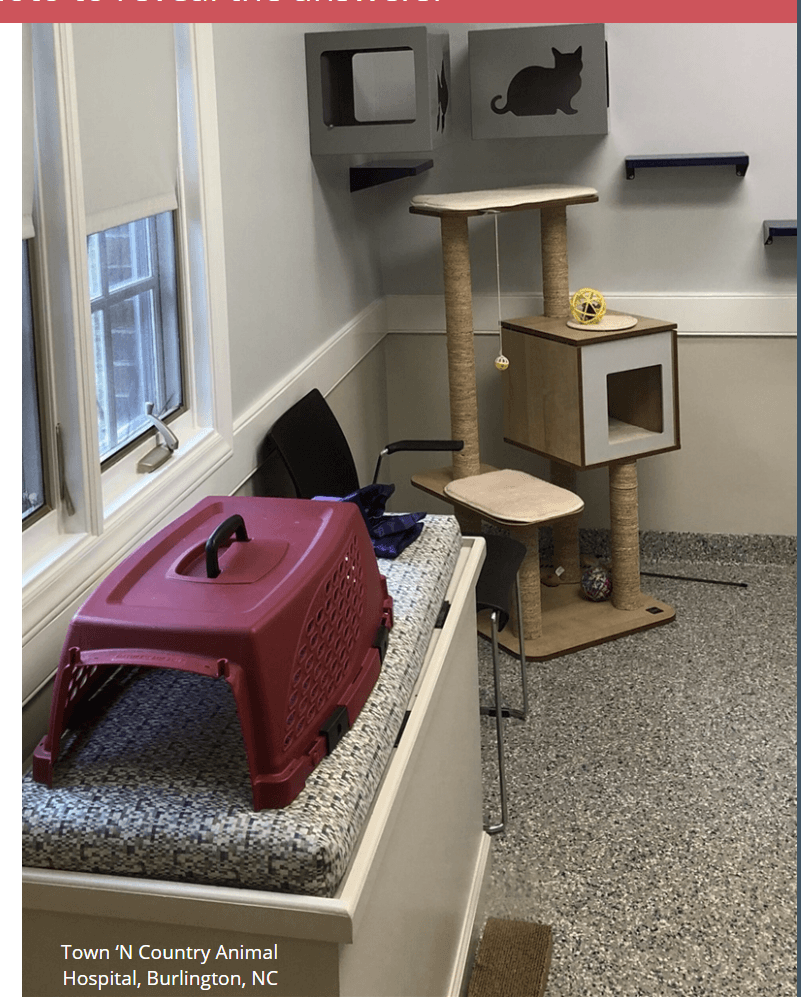What does FAS stand for?
Fear, Anxiety and Stress
If a pet doesn't want to be examined on a table, what are 2 other options?
Floor, lap, carrier.
What are 4 things in a clinic environment that give patients stress?
Noise, odour, hunger, pain, fear pheromones, unfamiliar pets and people
Any experience, environment, or object that disrupts the body's normal state is called this
A stressor
To help create a positive emotional response to the clinic, patients should be offered highly desirable types of these.
Treats
How is FAS classified?
Low/Moderate/High Or Levels 0-5
The exam room is a sensory environment so we need to be aware of how the pet experiences the following 5 things -
sight, sound, smell, touch and taste (treats)
Training for the team must include communication with pet owners. For example, instead of saying a pet is aggressive or cranky, we would use a term like
Fearful or anxious
The addition of something pleasant to a situation to encourage repeated behaviour/s is called
Positive Reinforcement
Exam tables, patient scales, and kennels should all have this, to promote a feeling of stability/security.
A non-slip surface
What are 3 signs of mild/level 1 FAS in a dog?
Lip licking, avoiding eye contact, turns head away, lifts paw, partially dilate pupils, slight panting but corners of lips closed
Every exam room should be equipped with these two things. A treat is an example of 1, while a squeaky toy is an example of the other
Rewards and distractions.
Training for the team should include understanding of 4 things to avoid when interacting with dogs
Avoid standing in front of or bending overtop of them, avoid staring/prolonged eye contact, no rapid movements, do not offer treats quickly
What are 3 positive reinforcers that can be used in a vet clinic?
Treats, praise, petting, grooming, playing
This widely recognized calming pheromone for cats is frequently used in exam rooms and on clinic towels.
Feliway
What are 3 signs of moderate/level 2-3 FAS in cats?
How many Fear Free objects can you see?
There are 5
What are 2 rules to follow when moving a pet in clinic by leash?
Never pull/drag
Keep the leash short (1-2 feet)
Use a slip lead
Use food as a lure
This is what we call learning that results in a relatively permanent change
Conditioning
What are 3 things we can do/use to keep noise to a minimum in the clinic?
Use white noise, speak calmly, play calming music.
If a patient is showing signs of FAS by struggling, what rules do we follow for a dog? What about a cat?
Dog = >3 sec and we stop, no more than 3 tries
Cat = >2 sec and we stop, no more than 2 tries
Along with the medical history, you need this to complete a Fear Free exam...
An emotional records
What are 2 rules to follow when transporting pets in carriers?
Never carry from just the handle
Do not allow the carrier to swing/hold it tight to your side
This is the term we use for adding something aversive to a situation to decrease an unwanted behaviour in the future.
Positive punishment.
What does CAM stand for and what are 2 examples of products that fall under this category?
Complimentary and Alternative Medicine
- healthcare practices not part of conventional healthcare e.g.:
Pheromones
Nutraceuticals
Botanicals